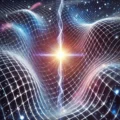A Space Devoid of all Matter and Energy, is a Convenient Fiction
Critique of the “Perfect Vacuum” Concept
The concept of a “perfect vacuum” – a space devoid of all matter and energy – is a theoretical construct that has been instrumental in the development of certain scientific theories, but it also presents significant challenges and potential misinterpretations.
The Theoretical Perfect Vacuum
The “perfect vacuum” is defined as a theoretical space completely devoid of matter and energy. It’s crucial to understand that this is a theoretical construct; a true perfect vacuum is considered impossible to create or find in the universe. The existence of the interstellar medium, the raw material for star formation, demonstrates that space is not empty.
The concept of a perfect vacuum has been instrumental in the development of certain scientific theories. For instance, it underpins the idea that “the speed of light is constant” in free space. However, this reliance on a hypothetical scenario has led to the problematic redefinition of fundamental constants.
Challenges to the “Empty Space” Notion
The idea that there is nothing in space “that enables or affects the propagation of energy (light)” has been a subject of debate for centuries.
- Historical Context: Nearly 2500 years ago, Aristotle proposed aether as the fifth element that resided in space as the medium through which light traveled. Albert Einstein initially considered the possibility of an aether but later abandoned the idea. He believed that aether could be a medium supporting the propagation of electromagnetic waves, but he found no experimental evidence for its existence. In his early work on special relativity, Einstein assumed that aether existed but argued that it was undetectable and had no absolute motion. He also postulated that the speed of light in a vacuum was constant for all observers, regardless of their motion. Einstein’s theory of general relativity, published in 1915, does not require the existence of an aether. In fact, general relativity is incompatible with the concept of an aether.
- Counterarguments: The idea that there is nothing in space “that enables or affects the propagation of energy (light)” is challenged by Faraday’s discovery that magnetic fields can influence the polarization of light. Magnetic fields are indeed present in space, as evidenced by solar flares, which are giant loops of magnetic current. While the aether concept was discarded because it did not fit the idea of space as an empty vacuum, the existence of a medium, whether associated with space or energy, is significant. Physicists recognize two properties of space that affect the propagation of energy: permittivity (ε0) and permeability (μ0). These properties allow space to hold a magnetic field (flux) and charge, respectively.
- Einstein’s Contradiction: The notion that “space is empty” is contradicted by the very physicist who proposed E=mc². He argued that “the speed of light in a vacuum is the same for all observers,” which counters the observation of redshift. The interpretation of redshift as being due to the velocity of the emitting object contradicts the postulate that the speed of light is invariant.
- Energetic Space: Even in the absence of matter, space is permeated by the energy of electromagnetic radiation. This energy establishes a lattice of waves with characteristics defined by μ0 (permeability) and ε0 (permittivity), which influence the propagation of energy. Thus, the speed of light is not independent of the medium, even if that medium is energetic rather than material.
- Implications of a True Vacuum: Consider the implications: if a perfect vacuum existed, there would be no medium to support an electrical arc. The breakdown voltage would approach infinity. This is analogous to the ultraviolet catastrophe, where a theoretical infinity reveals a flaw in the underlying model.
Conclusion
To assert that conditions in the vacuum of space are fundamentally different based on untestable, mythical scenarios, and to use this assertion to support a questionable theory, is a form of intellectual dishonesty. It risks leading science down a path built on a foundation of unrealities. The concept of a perfect vacuum, while useful in some theoretical contexts, may obscure a more complex reality in which space is not truly empty and possesses properties that influence the propagation of energy.
